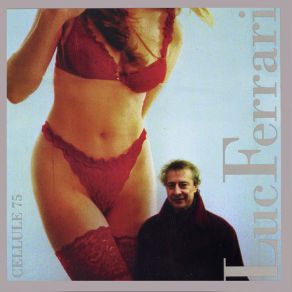Cellule 75
Download links and information about Cellule 75 by Luc Ferrari. This album was released in 1998 and it belongs to Electronica, Avant Garde Jazz, Avant Garde Metal, Alternative, Classical genres. It contains 2 tracks with total duration of 55:48 minutes.

|
|
|---|---|
| Artist: | Luc Ferrari |
| Release date: | 1998 |
| Genre: | Electronica, Avant Garde Jazz, Avant Garde Metal, Alternative, Classical |
| Tracks: | 2 |
| Duration: | 55:48 |
| Buy it NOW at: | |
| Buy on iTunes $9.99 | |
| Buy on iTunes $9.99 | |
Tracks
[Edit]| No. | Title | Length |
|---|---|---|
| 1. | Cellule 75 | 31:17 |
| 2. | Place des abbesses | 24:31 |
Details
[Edit]Cellule 75 presents two of music concrète composer Luc Ferrari's 1970s creations: the title track from 1975 followed by "Place des Abbesses," created in 1977 at his own Studio Billig. "Cellule 75" tampers with the percussive function of the instruments and plays with instrumental role-switching and layering. It opens with simple, repeating melodies provided by pianist Chris Brown and percussionist William Winant, backed by a humming machinery ambience. Layers and notes get added onto successive loops, until the phrases become relatively lengthy and complex. After establishing this theme and structure, the variations begin, as the piano switches to soloing, referencing parts of the theme out of different layers, and usurping the phrasing of the other electronic sounds present. The piece is a continuous buildup of musical layers, imperceptibly segued into the beginning's stripped-down simplicity, from which the process starts again, but never turns out the same. After continually playing with the expectations of the close listener, it appropriately closes with several false stops. The second piece begins with slowly turning loops overlaying small electronic swells that pan between channels. This turns into an electronic atmosphere that's a seeming precursor to the "space" of '90s space rock bands, followed by a repeating of the opening form, this time with vocal samples. The panning continues, echoing from side to side, while newly added electronic sounds rise out of the center. About halfway through the piece, Ferrari switches briefly to saxophone and water sounds, providing organic contrast to all of the electronic construction.